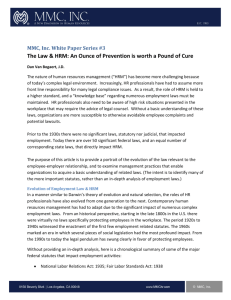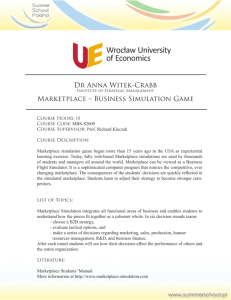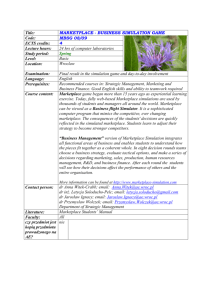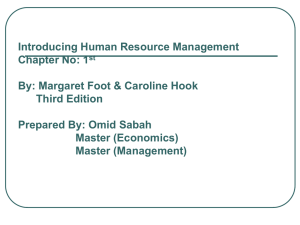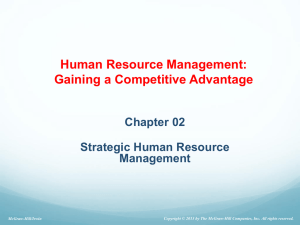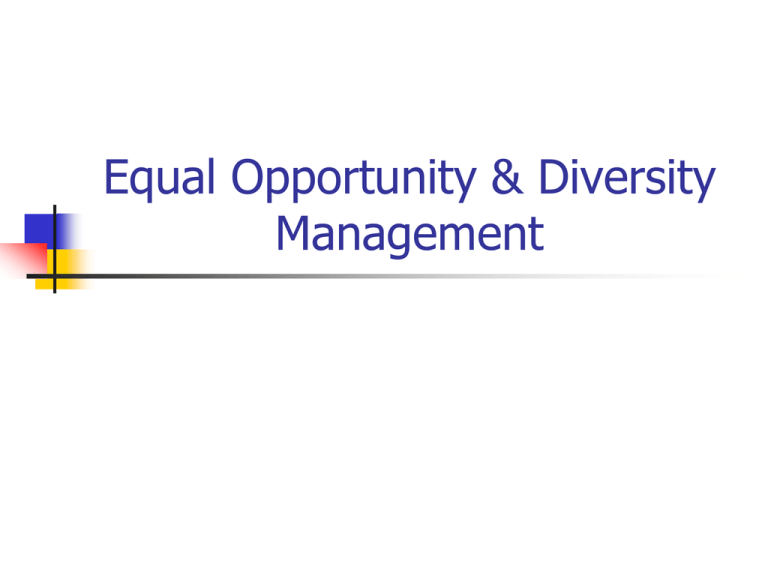
Equal Opportunity & Diversity
Management
Discussion Topic
Is there a business case for equal
opportunities and diversity management
at the workplace?
What is the Business Case?
A structured proposal for business change
Justified in terms of costs and benefits
Addresses the business need that the project seeks
to resolve
reasons for the project
expected business benefits
the options considered
expected costs of the project
a gap analysis
expected risks
Equal Opportunity (EO)
“Equal opportunity policies can be seen
as an attempt to eradicate
consideration of social differences from
organizational decision-making using
bureaucratic means” (Liff, 1999).
Equal Opportunities Initiatives
As stated by Dickens, EO initiatives concern policy
and practice designed to tackle the differential
distribution of opportunities, resources and rewards
between workers, usually based on their membership
of a social group.
Equality commissions:
• Commission for Racial Equality (CRE)
• Equal Opportunities Commission (EOC)
• Disability Rights Commission (DRC)
Reasons for Implementing
Equal Opportunity
•
•
Positive Pursuit of Organization
Benefits
Penalty avoidance through legal
compliance
Positive Pursuit of
Organization Benefits
•
The image of a “good employer”
- improving recruitment
- better retention of existing staff
•
Organizational Effectiveness
- lower turnover rates
- better employment relations
- greater creativity
Avoidance of Lawsuits
•
•
Extensive national legislation
Wider scope of the anti-discrimination
legislation
Dealing with lawsuits are costly!
Problems of translating EO
prescription into practice
•
•
•
Work is a place where identities are
shaped and lived out
Divisions between ‘disadvantaged’
groups
Human resource concepts and policies
disseminate workplace inequality
Rhetoric and Reality of HRM
Critical and empirically-based evaluations of HRM
indicate a ‘reality’ which includes:
- work intensification
- job segregation
Thus, HRM emerges as ‘bad news’ for workers (Dickens).
How does HRM facilitate inequality?
Examine through two important concepts in the HRM
model (Guest, 1987):
•
•
Commitment
Flexibility
Distinction Between EO &
Diversity paradigm
Work Foundation (formerly the Industrial Society) suggests that:
•
•
“Where equality policies open doors, policies designed to value
diversity offer a more strategic way of moving the business
forward, backed up by a strong business and ethical case. Valuing
diversity goes further than equality” (Barmes and Ashtiany, 2003).
Equal opportunities policies are legislation led, remedial and
based on the assumption that minority groups will assimilate into
the dominant culture.
Valuing diversity is visionary in aiming to create a positive work
environment in which everyone benefits and can work to their full
potential in pursuit of organisational goals, aims and objectives.
Diversity Management
Definition:
Requires an appreciation that people are
different
Emphasize managerial skills and policies
Optimize each employee’s contribution to
the overall organizational goals
Enhance organizational morale,
productivity and benefits
Types of Diversity
1. Superficial or “Surface-Level"
Diversity
e.g. differences in Gender, Nationality…
2. “Deep-Level" Diversity
e.g. differences in knowledge, differences in values …
Business Case of Diversity
Mirrors the demographics of the marketplace in a
global and diverse marketplace (In a global and
diverse marketplace, a company whose race and sex
composition mirrors the demographics of the
marketplace it serves is better equipped to thrive in
that marketplace than a company whose appearance
is different from its market's appearance).
Why Diversity Management?
Believe differences can bring sustained
business advantage through good
management practice
Survive in an increasingly competitive
global marketplace
Expected Benefits from
Diversity Management
Addressing Skill Deficiencies
Improve Team Effectiveness
Managing Change
Recruitment and Retention of Staff
Reflecting Diversity of Customer Base
Opportunity to Create and Develop Interorganizational Relationships
Increase flexibility - necessary for survival
Reduced Risk of litigation
Conclusion
There is a business case for equal
opportunity and diversity
management at the workplace





